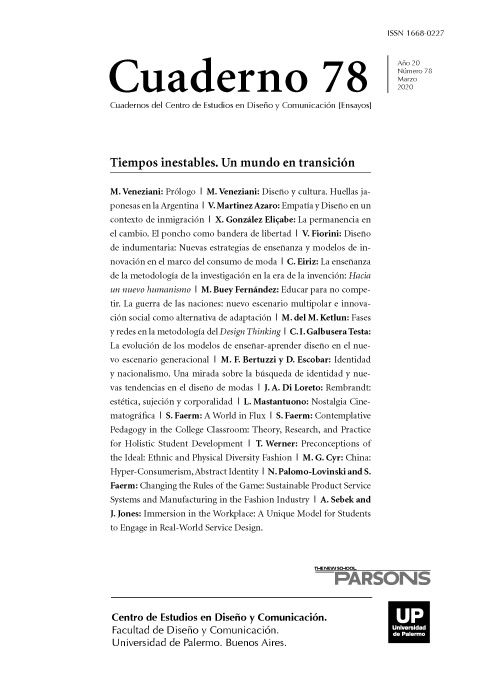La enseñanza de la metodología de la investigación en la era de la invención: Hacia un nuevo humanismo
Abstract
Part of the debate regarding teaching is limited to the discussion about the incorporation of new technologies in the classroom and the understanding of the subjectivity of current students (millennials). The modes of social interaction are changing and as the styles of appropriation of knowledge are tributary to the available models in social effectiveness, it is natural that the ways in which new generations appropriate knowledge, is also changing. However, the way we make sense of the possible effects of that transformation is part of the production of the change itself. In this paper we try to reflect on the discourse regarding the learning styles of the new generations, the changes that have been produced from the Tics and later on the consequence that these changes can bring in the teaching of the research methodology , placing special emphasis on the contexts of discovery and invention.
References
Barthes, R (1986). Lo obvio y lo obtuso: imágenes, gestos, voces. Buenos Aires. Paidós.
Bauman, Z. (2005). Los retos de la educación en la modernidad líquida. Barcelona: Gedisa.
Edwards, V. (1988). Los sujetos y la construcción social del conocimiento en primaria: un estudio Etnográfico. Buenos Aires: Paidós.
Gould, S. (1983). Desde Darwin: Reflexiones sobre historia natural. Madrid: Hermann Blume Ediciones.
Gould, S. (2006). El pulgar del panda. Barcelona: Editorial Crítica S.L.
Grassi, E. (1999). Vico y el Humanismo. Ensayos sobre Vico, Heidegger y la retórica. Barcelona: Antrhopos.
__________. (2001-2002). El comienzo del pensamiento moderno: de la pasión y la experiencia de lo originario. Cuadernos sobre Vico, 19-46. Recuperado de http://institucional.us.es/revistas/vico/vol.13-14/2.pdf
Han, B.-C (2013). La sociedad de la transparencia. Athamasha. Recuperado de https://editorialatamansha.files.wordpress.com/2015/12/la-sociedad-de-la-transparencia.pdf
__________. (2014). La agonía del Eros. Barcelona: Herder. Recuperado de https://cursosluispatinoffyl.files.wordpress.com/2014/01/byung-chul-han_la-agonc3ada-del-eros.pdf
Morelli, S. (2017). Gestión, política y comunicación. Buenas prácticas en la implementación de proyectos municipales. Buenos Aires: Ugerman Editor.
Salutati, C. De laboribus Herculis. libri IV. Biblotheca Agustana. Recuperado de https://www.hs-ugsburg.de/~harsch/Chronologia/Lspost14/Salutati/sal_h000.html
Samaja, J. (1996). La bolsa y la especie. Para volver a pensar el sistema de la abducción en el sistema de inferencias. Revista científica de la Facultad de Bellas Artes de la Universidad Nacional de La Plata. 21- 35. Está indicado Año 1, Número 1.
__________. (1998). El lado oscuro de la razón. Buenos Aires: JVE editores.
__________. (2000). Semiótica y dialéctica: seguido de la Lógica breve de Hegel. Buenos Aires: JVE editores
__________. (2004). Epistemología y metodología: elementos para una teoría de la investigación científica. Edición ampliada. Buenos Aires: Eudeba.
Serres, M. (2013). Pulgarcita. Recuperado de http://uruguayeduca.edu.uy/sites/default/files/2017-05/pulgarcita.pdf
Medios audiovisuales
Entrevista a Manuel Castells. Recuperado de https://www.youtube.com/watch?v=eb0cNrE3I5g&list=PLTpzsjyse9ZFeQOoge2vi2jBBSbuRfQmp
Michel Serres. Las nuevas tecnologías, revolución cultural y cognitiva. Recuperado de https://www.youtube.com/watch?v=8qh44YFczto
Los autores/as que publiquen en esta revista ceden los derechos de autor y de publicación a "Cuadernos del Centro de Estudios de Diseño y Comunicación", Aceptando el registro de su trabajo bajo una licencia de atribución de Creative Commons, que permite a terceros utilizar lo publicado siempre que de el crédito pertinente a los autores y a esta revista.


